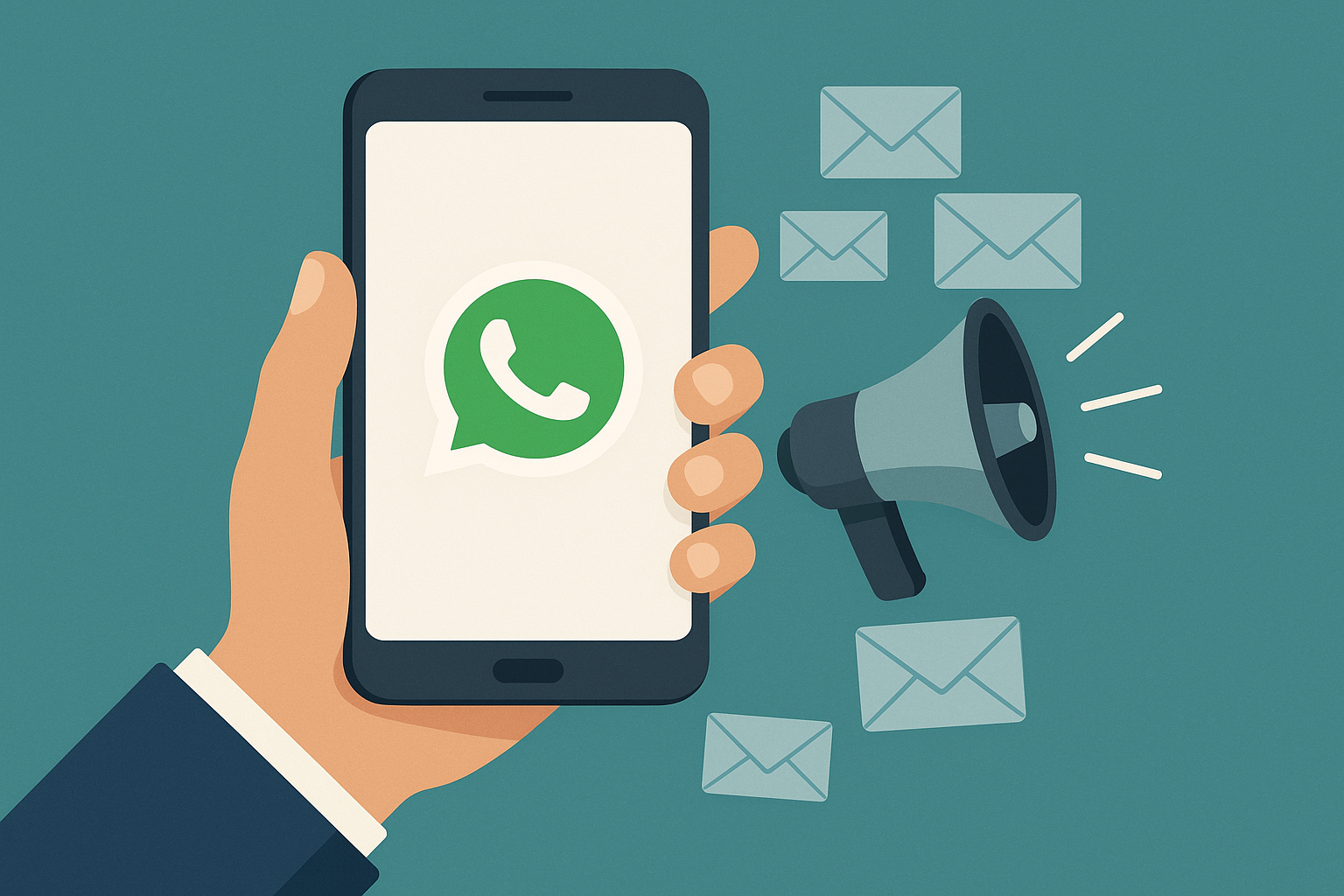Secondo Telefonica il volume annuale di messaggi di testo inviati è di 8,3 trilioni di dollari. E poi ci sono aziende che si rivolgono sempre più alla messaggistica come tecnologia chiave per coinvolgere i consumatori. Banche, ambulatori medici; società di media e enti di beneficenza stanno abbracciando gli SMS Application-to-Person (A2P) come il canale più efficace per interagire con il loro pubblico.
E c’è una buona ragione. In un mondo caratterizzato da una sempre maggiore interazione digitale in competizione per momenti sempre più piccoli di attenzione del consumatore; la messaggistica offre due ingredienti vitali: praticità e praticità. La ricerca di Dynmark spesso citata indica che SMS ha un tasso di apertura del 98%. SMS vince, capitolo e verso.
E mentre c’è sicuramente uno spostamento verso le app di messaggistica come Whatsapp is Facebook Messenger come una ricca alternativa peer-to-peer; la messaggistica SMS A2P sta crescendo di pari passo. La società di analisi mobleSQUARED prevede che il mercato A2P valga $ 58 miliardi entro il 2020 (passando da $ 12,88 miliardi nel 2015).
La cosa interessante della ricerca mobileSQUARED è che è insolitamente conservatore. Rappresenta la crescita basata su operatori mobili che implementano piattaforme di garanzia delle entrate per chiudere le rotte grigie; non la crescita del mercato avviata dalle imprese nei nuovi settori verticali, i mercati in crescita nei paesi che non hanno raggiunto il “picco mobile” o l’innovazione nei nuovi settori tecnologici come l’IoT. Tuttavia, indica il problema più ampio della frode all’interno dell’ecosistema di messaggistica.
Le rotte grigie, che guidano fraudolentemente sulle connessioni P2P [person to person] dedicate degli operatori; sono un aspetto, ma ci sono molti altri tipi di frodi nei messaggi che vanno dallo sfruttamento tecnico delle vulnerabilità in una determinata rete fino a una manipolazione più diretta di consumatori.
The prevalence of spam
Forse più preoccupante è la prevalenza di spam e SMiShing (phishing di SMS), pratiche comuni sia nella messaggistica mobile che nella messaggistica tramite app di chat.
All’inizio di quest’anno, l’ente commerciale globale MEF ha pubblicato il Rapporto sulle frodi di messaggistica mobile 2016. Ha riscontrato che più di un quarto dei consumatori (28%) riceve un messaggio SMS non richiesto ogni giorno e il 58% riferisce di averne ricevuto uno ogni settimana.
Nelle app di messaggistica, il problema è solo leggermente meno frequente; con il 26% degli utenti delle app di chat che ricevono un messaggio di testo indesiderato ogni giorno, mentre il 49% ne riceve almeno uno a settimana.
Mentre la maggior parte dei messaggi mobili non richiesti non è molto più di un fastidio, ad esempio notificando agli utenti un’offerta o un servizio indesiderato; il 33% dei consumatori ha dichiarato di aver ricevuto un messaggio SMiShing con lo scopo di indurli a divulgare dati personali come la banca dettagli o password per i servizi online.
MEF stima che SMiShing contribuisca con una stima di $ 680 milioni al costo annuo di frode di $ 2 miliardi attualmente sostenuto dagli operatori di telefonia mobile e dai consumatori. È anche interessante notare che sebbene il canale SMS riceva la più alta occorrenza giornaliera di messaggi non richiesti, rimane il più affidabile con il 35% che indica che era il loro canale più affidabile; contro il 28% che confida maggiormente nelle app di messaggistica e solo il 18% scegliendo piattaforme come Facebook, Yahoo e Skype.
Ciò è probabilmente dovuto al fatto che la percentuale di messaggi spam è ancora inferiore all’uno per cento del volume complessivo dei messaggi. Rispetto al 50% circa dell’email, SMS è ancora un canale pulito e potente.
The correlation of costs
È anche vero che esiste un’elevata correlazione tra i costi di consegna di un messaggio e la quantità di spam e frodi che il canale attira. Ad esempio, si potrebbe sostenere che la ragione di bassi livelli di spam in Germania e Francia è direttamente correlata a:
- Il costo per inviare un messaggio attraverso percorsi legittimi è relativamente elevato.
- L’efficacia degli operatori locali in quei paesi per bloccare le rotte grigie e filtrare lo spam è molto buona.
Al contrario, India, Nigeria e Sudafrica hanno un costo relativamente basso per l’invio di un messaggio ; sebbene le cose stiano migliorando, queste reti sono state storicamente meno protette. Allo stesso tempo, in molti primi paesi mobili i consumatori hanno meno probabilità di avere indirizzi e-mail e SMS, quindi, sostituisce l’email marketing.
Una mancanza di costi potrebbe essere il motivo per cui il 72% degli utenti dello studio ha ricevuto messaggi non richiesti da app di messaggistica come Whatsapp. Tuttavia, non esiste alcuna API ufficiale per l’invio di messaggi da Enterprise a Consumer su molte di queste piattaforme. Ciò riguarda in quanto indica che i truffatori stanno utilizzando i punti deboli nelle capacità; da persona a persona di queste app per inviare messaggi per conto delle imprese.
Inoltre, le app di messaggistica dovranno essere caute quando passano a comunicazioni aziendali legittime se non vogliono replicare il destino delle notifiche push; in cui i marketer troppo zelanti hanno inquinato il canale che ora è fidato solo del 16% dei consumatori.
There are several things that can be done to reduce fraud and spam across all channels:
Creare uno shortcode globale, un numero lungo o un indirizzo e-mail che può essere utilizzato per segnalare messaggi non richiesti. Più facile lo rendiamo, più persone lo faranno. Garantire che questi rapporti siano condivisi in tutto l’ecosistema in modo automatizzato in modo che possano essere attuati.
Operators must continue to install SMS and ss7 firewalls in their network to prevent gray and fraudulent routes from being exploited to send spam and SMiShing messages.
Le app OTT devono colmare i punti deboli nei loro sistemi che consentono agli account dei singoli utenti di inviare grandi quantità di messaggi non richiesti non rilevati.
When OTT apps finally allow the legitimate sending of Enterprise-to-Consumer messages via an API; they must charge for the service on a per-message basis to ensure that both scammers and overzealous merchants do not abuse the channel.
Innovare su come i provider di messaggi cloud; possono convalidare meglio l’identità delle aziende per garantire che i tentativi di SMiShing vengano contrastati presto e spesso.
While it is very encouraging that the A2P market is expected to grow in the coming years, we cannot take consumer confidence in the platform for granted.
Clearly the industry needs to implement measures that protect and fuel trust as drivers of future growth in new verticals and innovation in new technology areas such as IoT and machine-to-machine messaging.




